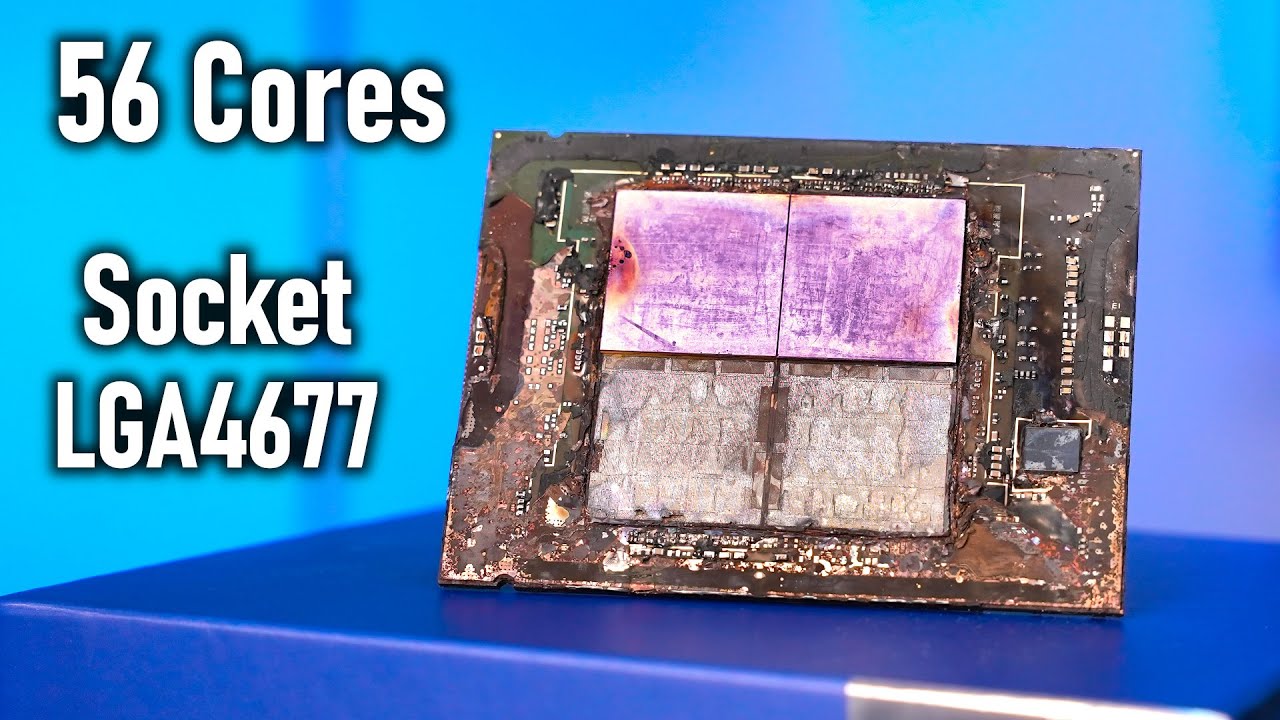Der8auer managed to lay hands (via eBay!) on a pre-release copy of Intel’s next generation high-end server chip, the Xeon Scalable “Sapphire Rapids” 56 core processor. This processor uses Intel’s new “tile” or “chiplet” architecture, with multiple chips interconnected via the Intel Embedded Multi-die Interconnect Bridge (EMIB), a 2.5-dimensional silicon interconnect layer to which individual tiles are bonded with insanely dense (55 micrometre pitch) bonding bumps. The architecture of the four processor tiles is similar to the consumer “Alder Lake” processors, but also includes the AVX-512 vector instruction set and the new Advanced Matrix Extensions (AMX), which is similar to the tensor core in a GPU and intended for machine learning applications.
The video shows what’s inside the package. If you believe that some of the most complex artefacts ever created by the human species should be treated with respect (if not reverence), this can be painful to watch, as the de-lidding does not go well and is particularly destructive.
There are presently no motherboards available which support this chip’s socket, so it was not possible to determine whether this under-the-counter market exemplar was functional. It is just mindboggling that Intel has figured out how to make all of the multitude of minuscule inter-tile interconnects bond with 100% reliability at a mass-production scale. And just look at all of those connections on the outside of the package!
